HOW TO CHOOSE A KNIFE SET
If you want to improve your kitchen skills, the best place to start is with the right knife. You have to consider what you’re cutting to determine which knife you need.
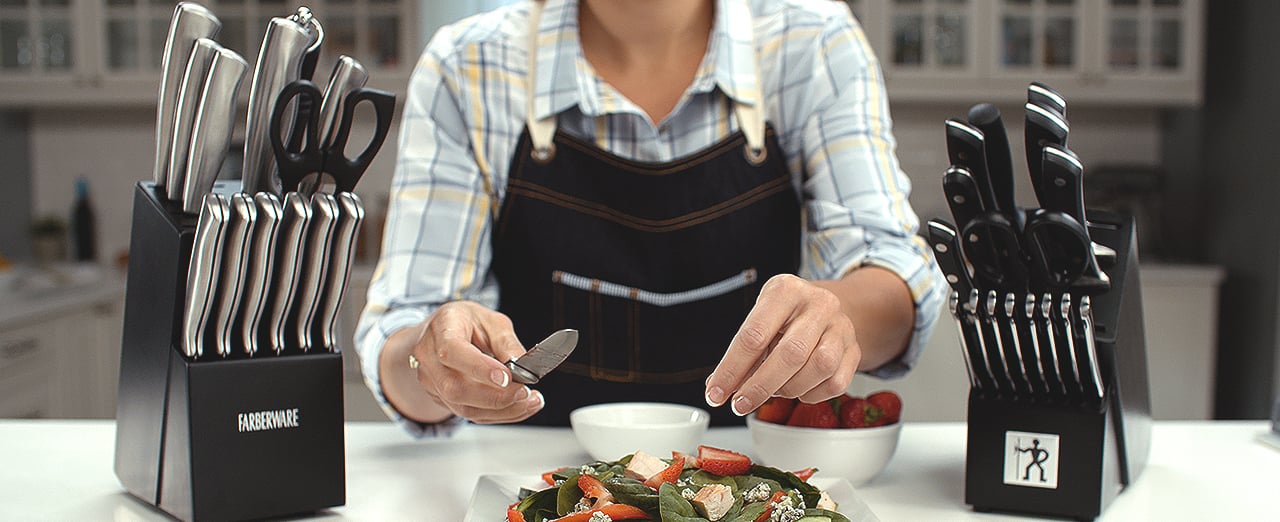

- TYPES
- CONSTRUCTION
- BLADES
Steak knives
If you’re looking for knives to use at the table for thick cuts of meat or poultry, a steak knife set is your best bet.
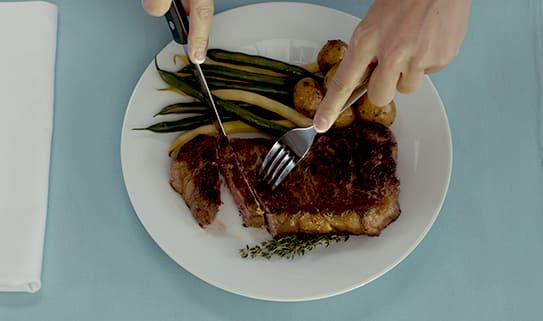
Chef's knife
A Chef’s knife is designed with knuckle clearance and a raised tip so that it can be held comfortably and used with a rocking motion to cut dense vegetables, fruits and meat, or to chop herbs.
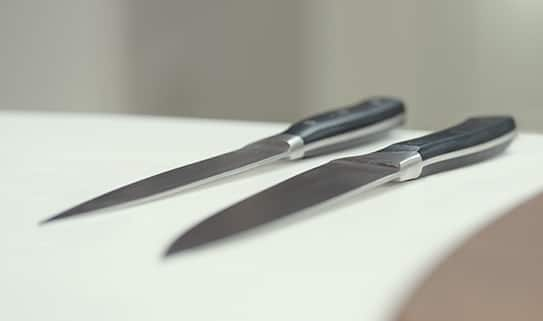
Carving knife
A slicing or carving knife works well on medium-sized vegetables and fruit as well as large cuts of meat.
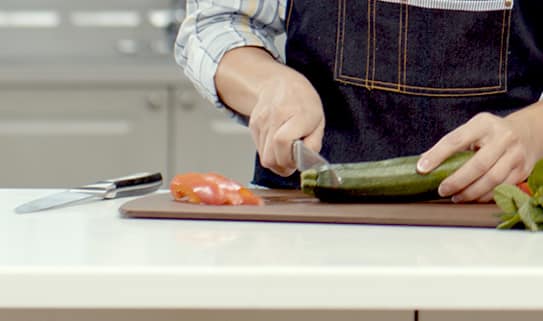
Serrated knife
A serrated bread knife is handy to have for crusty bread and slicing tomatoes, citrus fruit and delicate cakes.
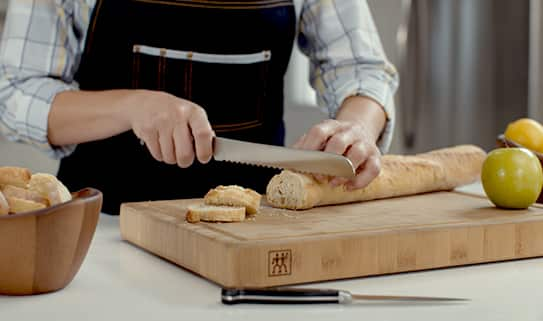
Paring knife
A paring knife allows you to quickly peel and slice fruits and small veggies.
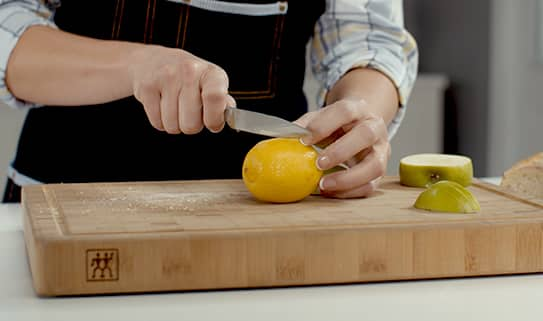
Santoku knife
A great multi-purpose knife is a santoku knife. It has the knuckle clearance of a chef’s knife but is typically shorter, thinner and lighter, with a less extreme rocking motion design. It’s a very useful tool for mincing, chopping and slicing both meats and vegetables. Indentations on the blade prevent food from sticking to the blade as you cut.
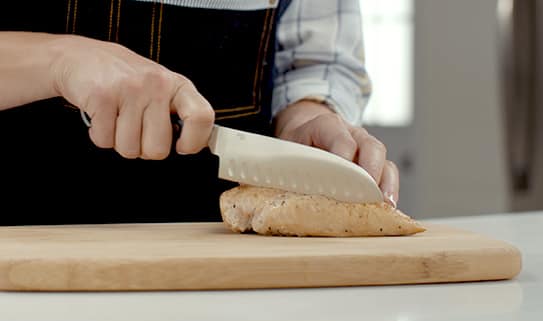
Specialty knives
Boning knives, fillet knives and cleavers are all designed with specific applications in mind.
SEE ALL KITCHEN KNIVES >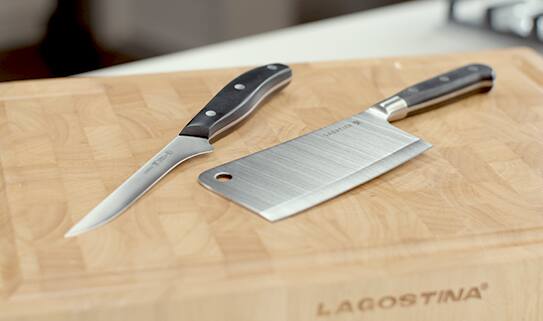
Forged knives
Forged knives are manufactured individually using high heat and pressure to form the knife into shape. One can usually identify a forged knife by the “bolster” which is the thick piece of steel between the handle and the blade. The bolster provides heft to the knife and acts as a safety feature, providing a buffer between the handle and the blade. Forged knives are generally more expensive than stamped.
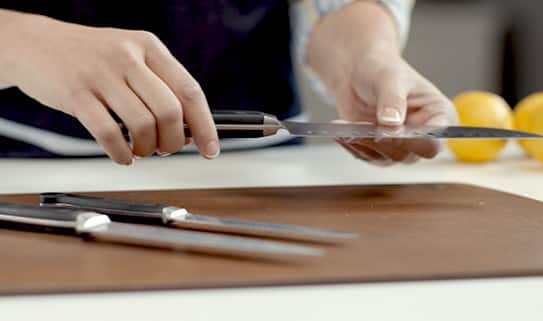
Stamped knives
Also known as flat heel knives, stamped knives are made using a cookie cutter process, where individual knife shapes are pressed out of a large sheet of rolled steel. The knife shapes are then ground into their final form before being hardened and tempered, sharpened and polished. Stamped knives are generally lighter, thinner, and less expensive than most forged knives.
SEE ALL KITCHEN KNIVES >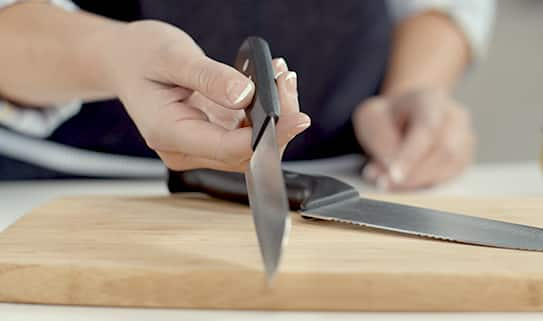
Stainless steel
High carbon, stainless steel is the most common material for modern kitchen knives. They’re resistant to stains, discolouration and corrosion, however they do require regular sharpening for optimal performance.

Ceramic
Ceramic blades do not require sharpening at all and will not rust or corrode over time. They are one of the hardest blades available, but they are brittle and can break if dropped on a hard surface. For this reason, they’re not recommended for cutting through bone or frozen foods.
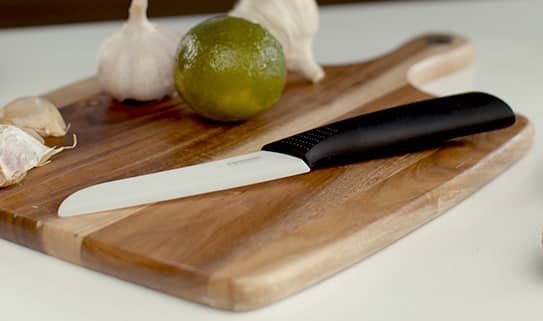
Damascus
Japanese style layered steel blades have a very hard core that can be sharpened to an exceptionally sharp and durable edge. The layers that surround the core provide stain resistance and strength.
SEE ALL KITCHEN KNIVES >
